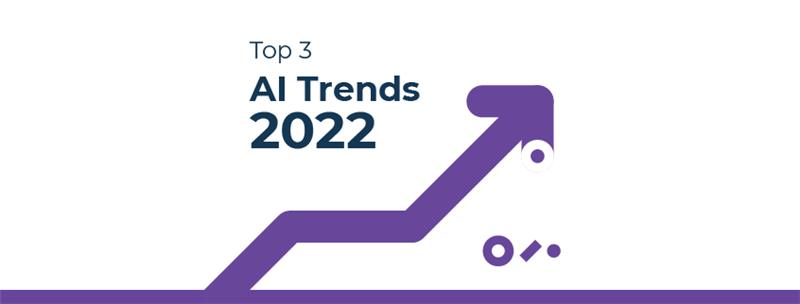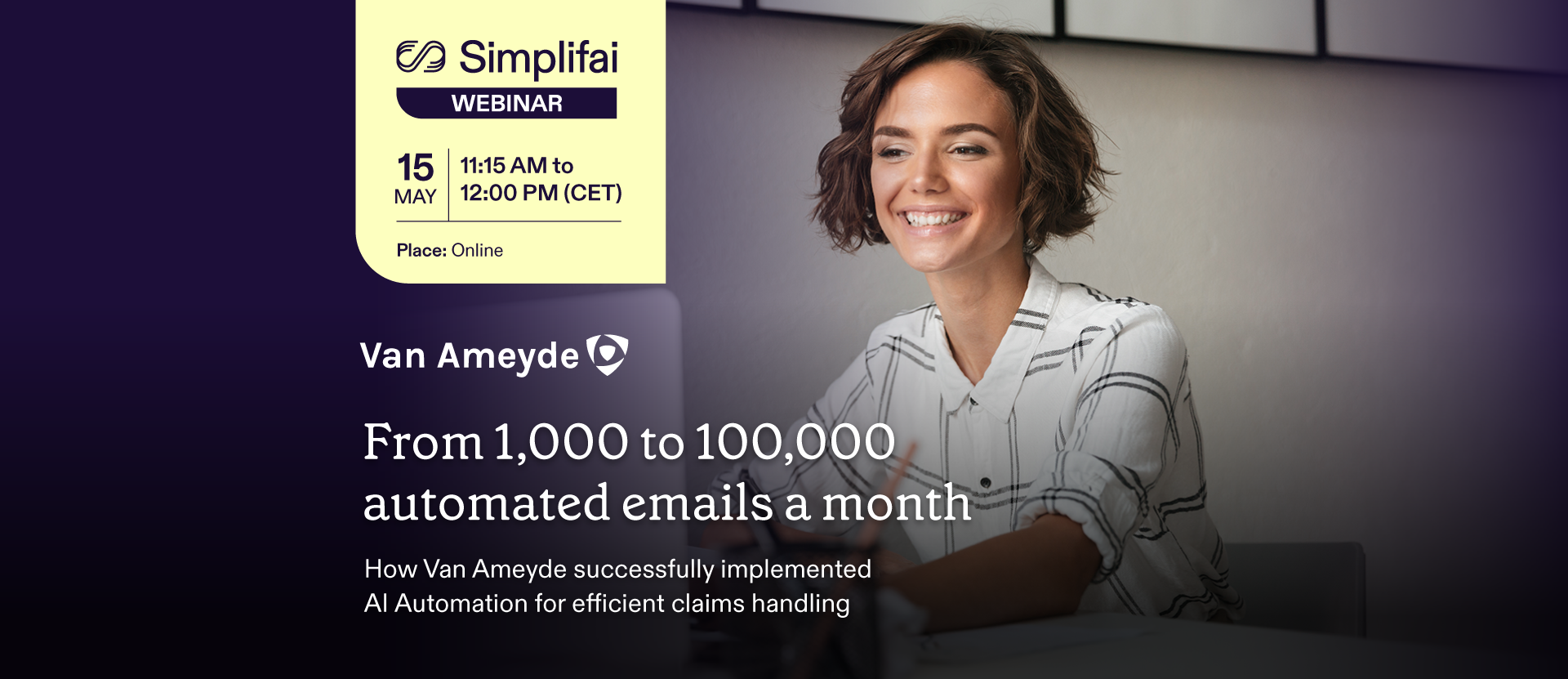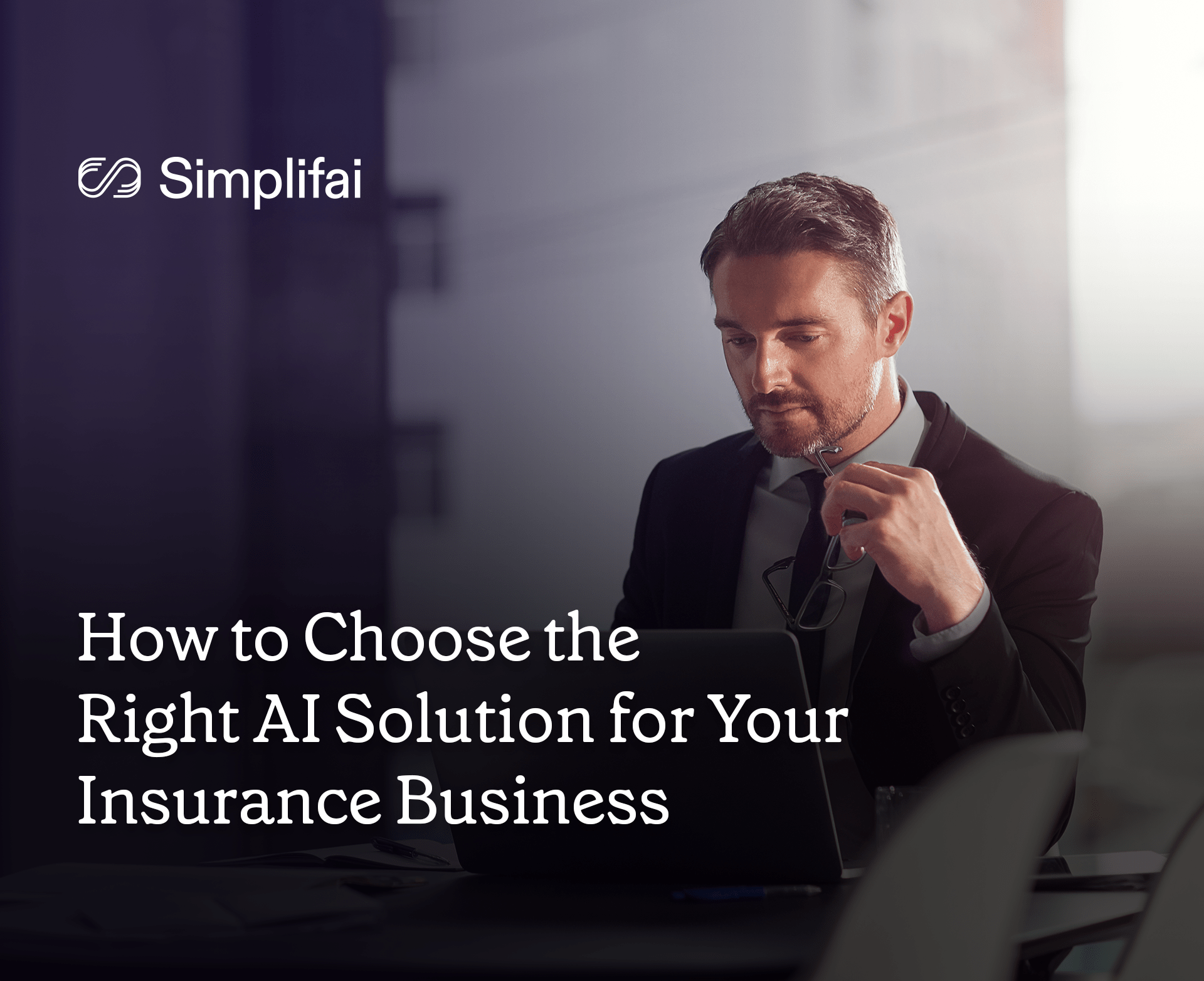Top 3 AI trends businesses should look for in 2022

Artificial Intelligence (AI) has been observed as the most transformative technology. The great amount of potential that it brings with it has always allowed businesses to position themselves as superior and influential. But before 2021, this potential was somewhat unexplored. It was the post-pandemic era that saw businesses relying on technology more than ever. The Covid-19 crisis threw light on the underlying possibilities of AI [1].
Digital innovation has put AI at the center of business operations [2]. The passing year has witnessed AI boosting productivity, streamlining workflows, delivering new products and services, accentuating corporate values, and leading businesses towards operational AI initiatives. 52% percent of companies accelerated their AI adoption plans because of the Covid crisis [3]. The future looks no different. We are likely to see expansion on these grounds making AI more instrumental in achieving modern business goals.
Here is our take on the top 3 AI trends businesses need to look for in 2022:
1. The augmented workforce
Since the advent of AI, there has been a constant fear that machines or robots will replace the human workforce. People saw the extraordinary capabilities of AI and machine learning which could overpower human potential. However, this is not true when it comes to introducing AI-culture in business workflow. 2022 will see businesses taking an augmented approach where human employees will work alongside AI solutions like digital employees. 25% of companies already use AI in workflow automation, while 51% of enterprises are planning to do so shortly [4].
These solutions use smart and cognitive processes to enhance human abilities and skills. By 2023, 40% of infrastructure and operations (I&O) teams will use AI-augmented automation in large enterprises, freeing up IT personnel’s time for strategic work [5]. In 2021, many organizations have addressed the problem of low productivity as human employees get stuck in low-value tasks that are redundant [6]. By bringing in an augmented approach, businesses will not only see a rise in productivity but also lessen the burden on their human employees.
Simplifai has been supporting businesses to achieve this by providing its Digital Employee solutions across various business verticals. The solution not only supports business operations but also delivers business value.
2. Omnichannel automation
The concept of automation is not new. It has been with us for decades now. But the latest generation of automation is taking businesses by storm. There is a shift in digital transformation for a competitive edge that requires a holistic approach towards AI. Businesses have been extensively using AI-powered chatbots to process structured data for minimizing manual effort and improving work efficiency. But recent times have witnessed a need for omnichannel automation that can replicate human actions across multiple stages of the workflow and is applicable to several departments and systems [7].
Businesses are in need of a holistic solution that can take care of chats, emails, and documents for a seamless user experience. They are looking for AI solutions that can mimic human actions like replying to a text, opening emails and attachments, recognizing content, categorizing them, and extracting information from the data.
Another challenge that businesses faced in 2021 was chatbots failing to interact with free text. Unstructured text constituted more than 85% of the content that businesses needed to process daily [7]. The earlier version of chatbots used RPA, which could process only structured content [7]. But with the omnichannel approach, businesses can overcome this difficulty.
Simplifai offers an omnichannel solution via Digital Employee that uses Intelligent Process Automation. It harnesses both Natural Language Processing and Robotic Process Automation for managing, automating, and integrating digital processes. The technology allows the solution to handle unstructured text and data. This helps the computer understand human communication, making the interactions between human and computer seamless.
As we walk into 2022, the market trends support the need to promote collaboration between different components of AI by bringing in the omnichannel approach. A chatbot is already a successful part of the total AI universe, but in the coming year, we need to focus on maturing other parts of it.
3. No-code AI
One of the biggest challenges that businesses faced during the adoption of AI-driven solutions was the lack of skilled AI engineers or IT specialists [8]. Not all businesses have a strong IT team to support such initiatives. Most of the AI solutions were either full code or low-code software, which required highly skilled tech people to help in the deployment of the solutions. However, the upcoming year will see a rise in No-Code AI solutions which will offer a simple and user-friendly interface to overcome this challenge. This will enable businesses without IT desk support to comfortably deploy AI solutions for increased efficiency.
No-code AI solutions are like no-code web design and UI tools where everything is pre-coded, and one only needs to personalize it as per the requirement. Simplifai has achieved something similar for AI-powered solutions called Simplifai Studio.
Simplifai Studio is a No-Code AI platform that allows businesses to configure, train, set rules and actions, connect to their systems, and track their Digital Employee performance all under one roof. One can easily work on the platform without any command in coding or Artificial Intelligence. It is simple to use and easy to customize as per the business requirements. The platform helps businesses beyond bot configuration and facilitates the managing and maintaining of bots.
The emergence of a new workflow paradigm
The coming year is sure to witness the emergence of modern enterprises that will leverage the innovative and disruptive technology of AI. It will drive them towards hyper-automation as part of their Digital Transformation strategy. This paradigm shift in the organizational workflow will empower businesses to support strategic-level business goals.
The above trends will lead businesses towards a new workflow paradigm that will streamline work processes guiding them towards customer satisfaction, increased work efficiency, and improved work quality. This approach will shelter businesses from the complexity and fragmentation, allowing their employees to focus on more demanding tasks [7]. They will not have to waste their time on redundant tasks and can anchor their attention towards supporting business expansion.
Artificial Intelligence led automation has never been a static process. We are in the early stages of digital transformation, and the future looks exciting with AI that has the potential to revolutionize almost every industry.
The advent of Intelligent Process Automation has opened the door towards end-to-end automation in workflows. AI and IPA together can bridge the gap between fragmented applications and systems, connecting legacy systems in your organization’s technology ecosystem [7]. This enables a far more efficient and collaborative system of workflows. In the coming years, we are likely to see an upgraded version of enterprises where hyper-automation will be the new normal.
References:
[1] The state of AI in 2020. (2020, November 17). McKinsey & Company. https://www.mckinsey.com/business-functions/mckinsey-analytics/our-insights/global-survey-the-state-of-ai-in-2020
[2] McKendrick, J. (2021, September 27). AI Adoption Skyrocketed Over the Last 18 Months. Harvard Business Review. https://hbr.org/2021/09/ai-adoption-skyrocketed-over-the-last-18-months
[3] AI Predictions. (n.d.). PwC. https://www.pwc.com/us/en/tech-effect/ai-analytics/ai-predictions.html
[4] IT Leaders Fueling Productivity with Process Automation. (2020, September 28). Salesforce. https://www.salesforce.com/content/dam/web/en_us/www/documents/platform/it-leaders-fueling-time-and-cost-savings-with-process-automation.pdf
[5] Gartner Predicts The Future of AI Technologies. (2019, November 5). Gartner. https://www.gartner.com/smarterwithgartner/gartner-predicts-the-future-of-ai-technologies
[6] Businesses at work. (n.d.). Okta, Inc. https://www.okta.com/businesses-at-work/2021/
[7] A Paradigm Shift in How Enterprises Work – Hyperautomation. (2021, January 5). DATAQUEST. https://www.dqindia.com/a-paradigm-shift-in-how-enterprises-work-hyperautomation/
[8] Reilly, J. (2021, November 5). How No-Code Platforms Can Bring AI to Small and Midsize Businesses. Harvard Business Review. https://hbr.org/2021/11/how-no-code-platforms-can-bring-ai-to-small-and-midsize-businesses


